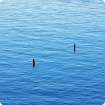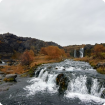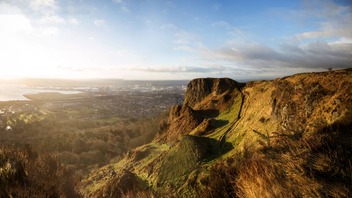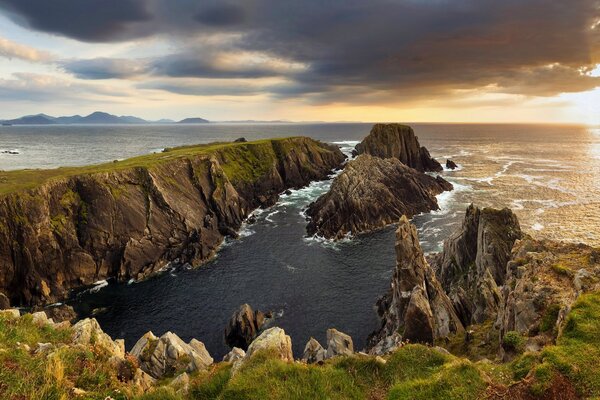

Cave Hill walking tour
“This must be the only place in Ireland where you can see giraffes and elephants on your walk.” I’m standing at the top of Cave Hill looking down at Belfast Zoo with walking guides Rodney Ferguson and Nicky Jones. And while we can’t see any giraffes, we do spy some brown bears lumbering around in the enclosure below. I imagine them scrambling up these shadowy hills after dark, roaming the silent forest and bellowing over the city.

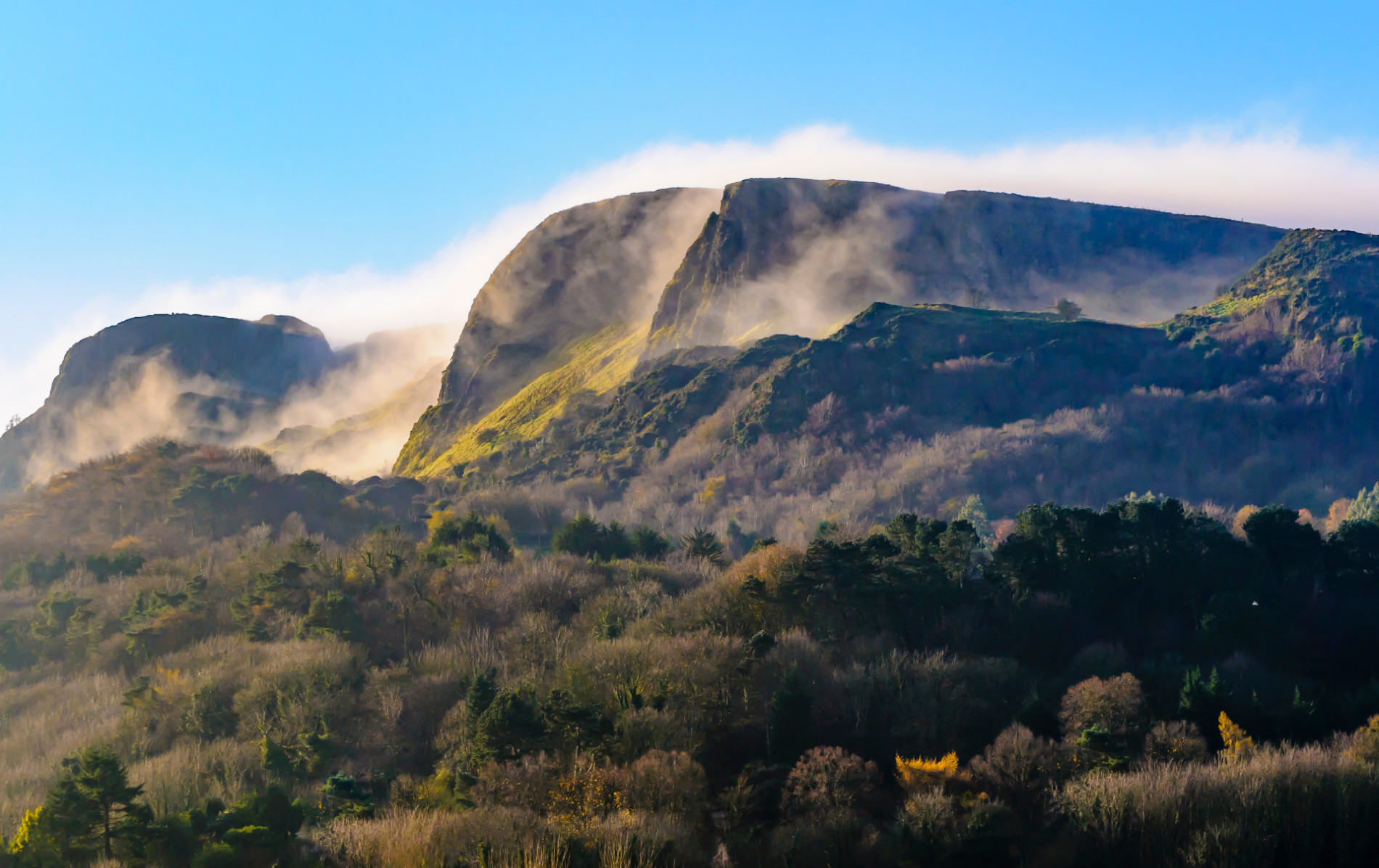
Cave Hill, Belfast
© Shutterstock
Rising to a height of over 370 metres, and visible from almost everywhere in the city, Cave Hill occupies a special place in the hearts, minds and lives of Belfast’s citizens. Marked by the caves from which it gets its name, the hill is also famous for a lofty cliff called Napoleon’s Nose, which nature has sculpted to resemble the French emperor. Along the top of this ridge, there are also the remains of an Iron Age fortification called McArts Fort.

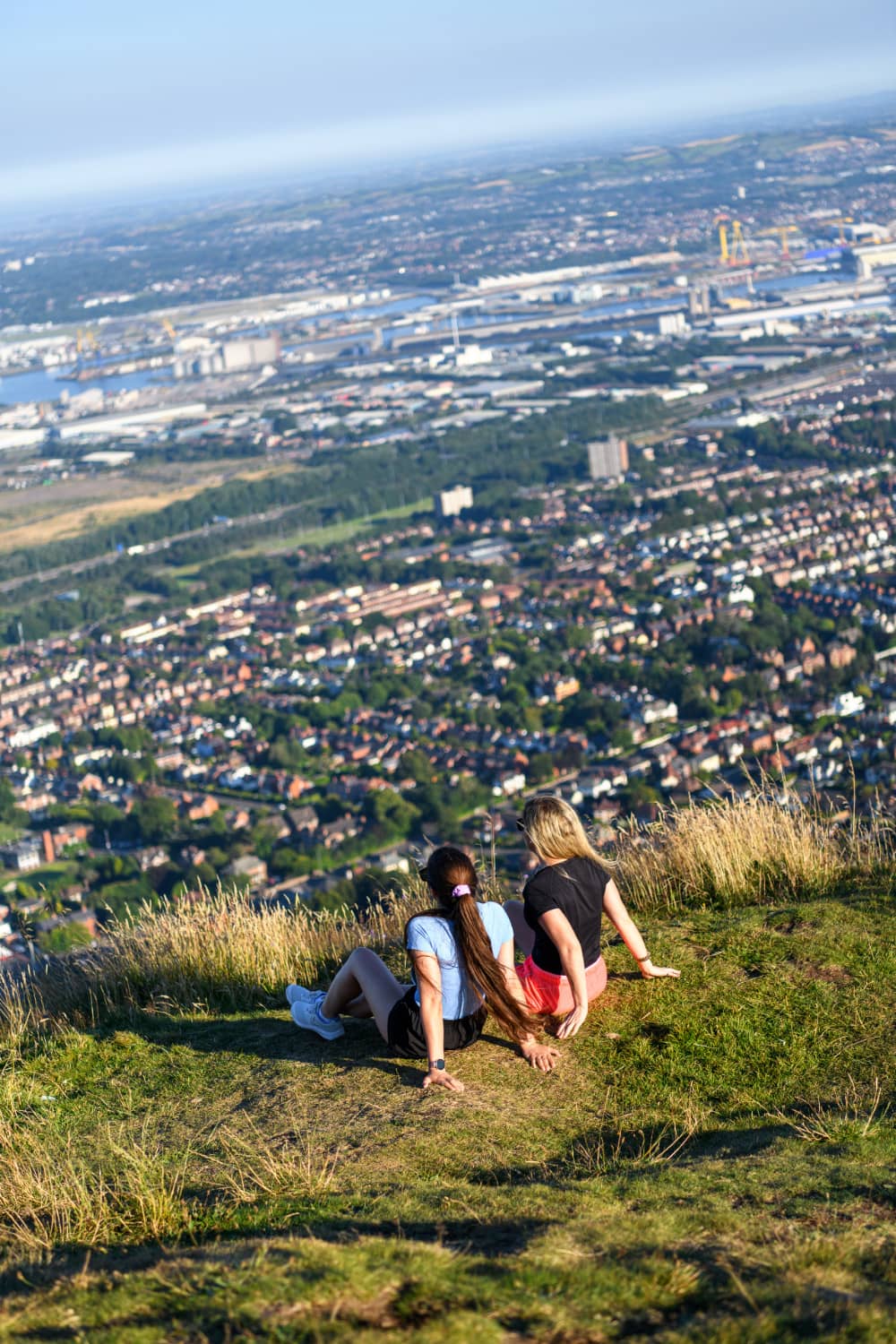
Girls relaxing on Cave Hill, Belfast


Man walking Cave Hill, Belfast
From here, the panoramic views stretch out to take in the Titanic Quarter, Belfast Lough and the Mourne Mountains. But from below, the craggy silhouette of Cave Hill looks imposing and monumental. In her poem, Mountain Shapes, 19th century poet Alice Milligan immortalised its connection to Belfast:
“Look up from the streets of the city,
Look high beyond tower and mast,
What hand of what Titan sculptor
Smoke the crags on the mountains vast”
These crags are said to have inspired author Jonathan Swift to create Gulliver’s Travels, resembling, as they do, a sleeping giant. And while there is no evidence to this story, it’s a romantic tale that certainly captures the imagination.
But Cave Hill doesn’t need tall tales – it has history, it has geology, it has drama. And a walk around it is the way to get to know it best.

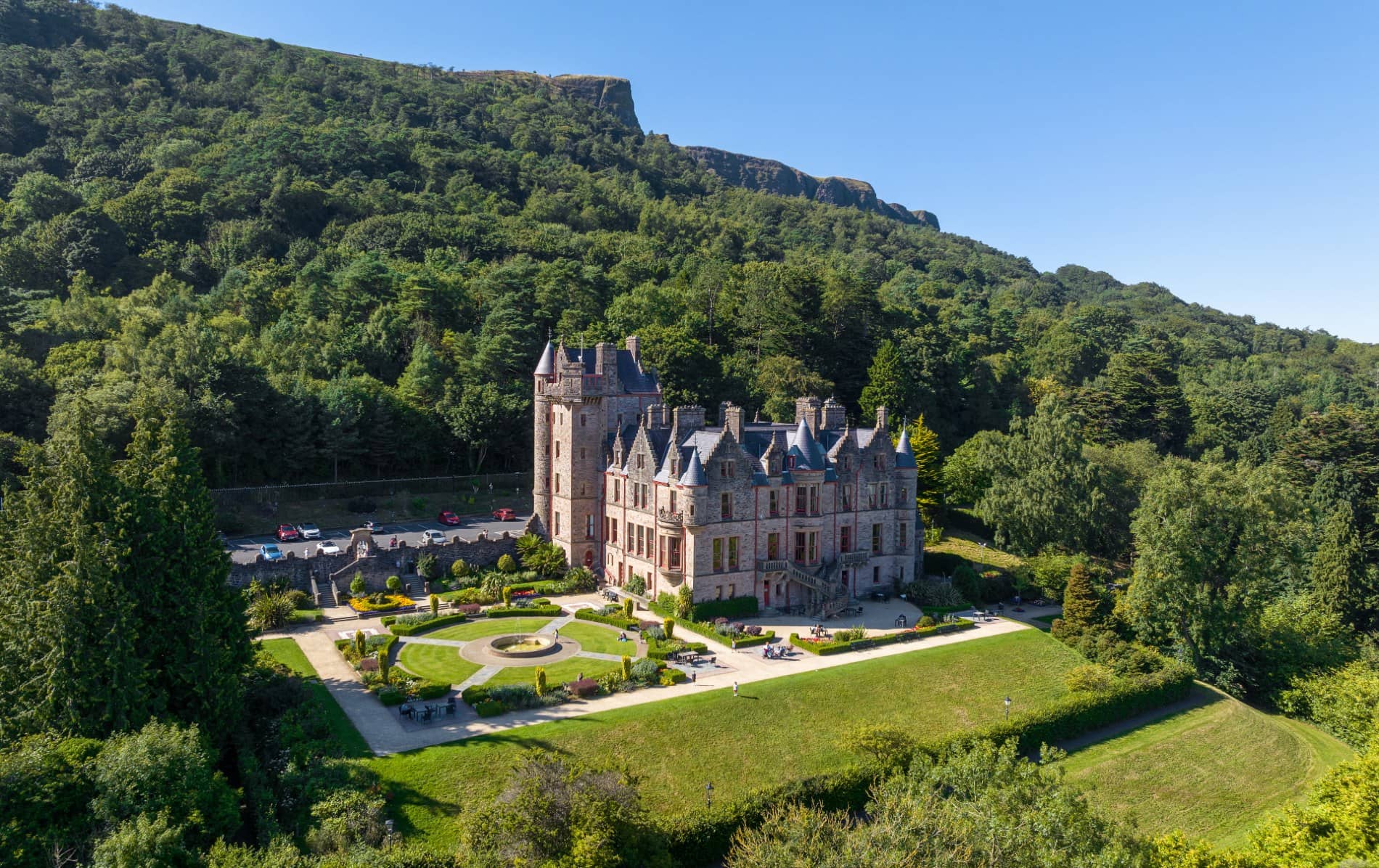
Belfast Castle, Cave Hill Country Park
We started today’s Belfast Cave Hill Walking Tour down the hill at 19th century Scottish baronial-style Belfast Castle, set within elegant formal gardens which are filled, strangely enough, with cats.
“There are nine cats hidden in the garden, some are quite obvious,” explains guide Nicky as we look at a topiary cat, resplendent in green, “but I still haven’t found them all.”
Built in the late 19th century, the Belfast Castle estate is today largely used as a wedding venue, and while the interior is a little spartan, the views across Belfast Lough that tumble down from the drawing rooms are spectacular. It’s what the Shaftesbury family, who lived here in the 19th and 20th centuries, would surely have prized most about the place. In 1934, the family donated the castle to Belfast city and the Cave Hill Country Park was established in 1994.


Interior of Belfast Castle


Cave Hill walking tour
Emerging into a fine drizzle that is typical of a “soft” Irish day, Nicky, Rodney and I set off. Heading up through the woods, we’re enveloped in a brilliant canopy of green with pockets of pale light spilling through the trees. We walk under beech and horse chestnuts, weaving along trails fringed with cow parsley, elderflower and nettle. “During the Famine years, nettles were used a lot,” Rodney tells me as we walk. “They’re a rich source of iron, but you have to get them young – the older leaves are full of toxins.”

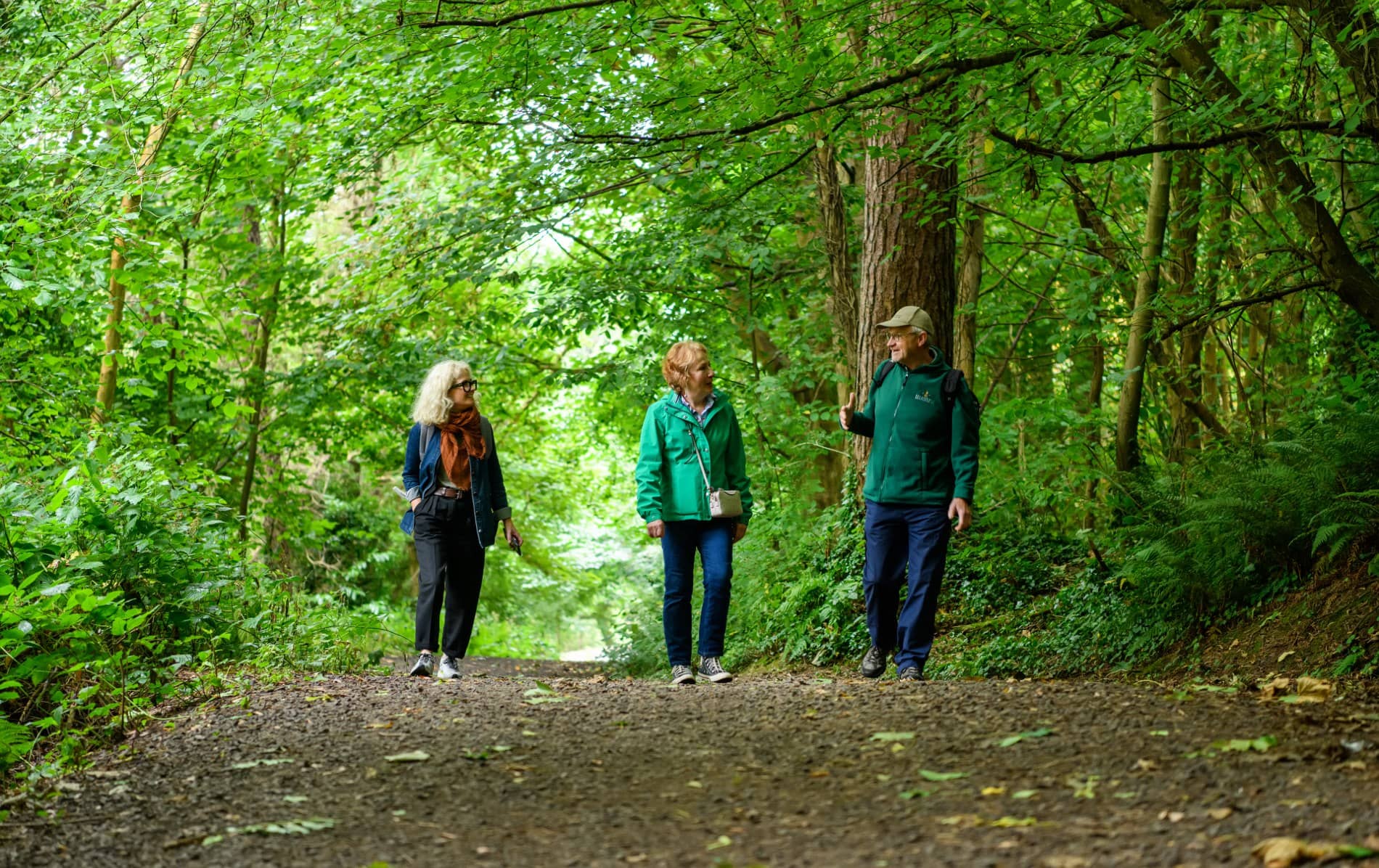
Cave Hill walking tour
This wilderness that sits above Belfast has unsurprisingly attracted diverse groups of people at different times through the ages from Iron Age Celts to 19th century workers looking for some downtime.
“Belfast is built on a limestone base with an overlay of basalt,” Rodney explains. “In the middle of that, there was a lot of flint – that’s what the earliest settlers would have made their tools from. And you can still find original axe heads and things scattered around the hills. In the Early Christian era, from around 400-800AD, there were actually a lot of people who lived here… hundreds of families.”

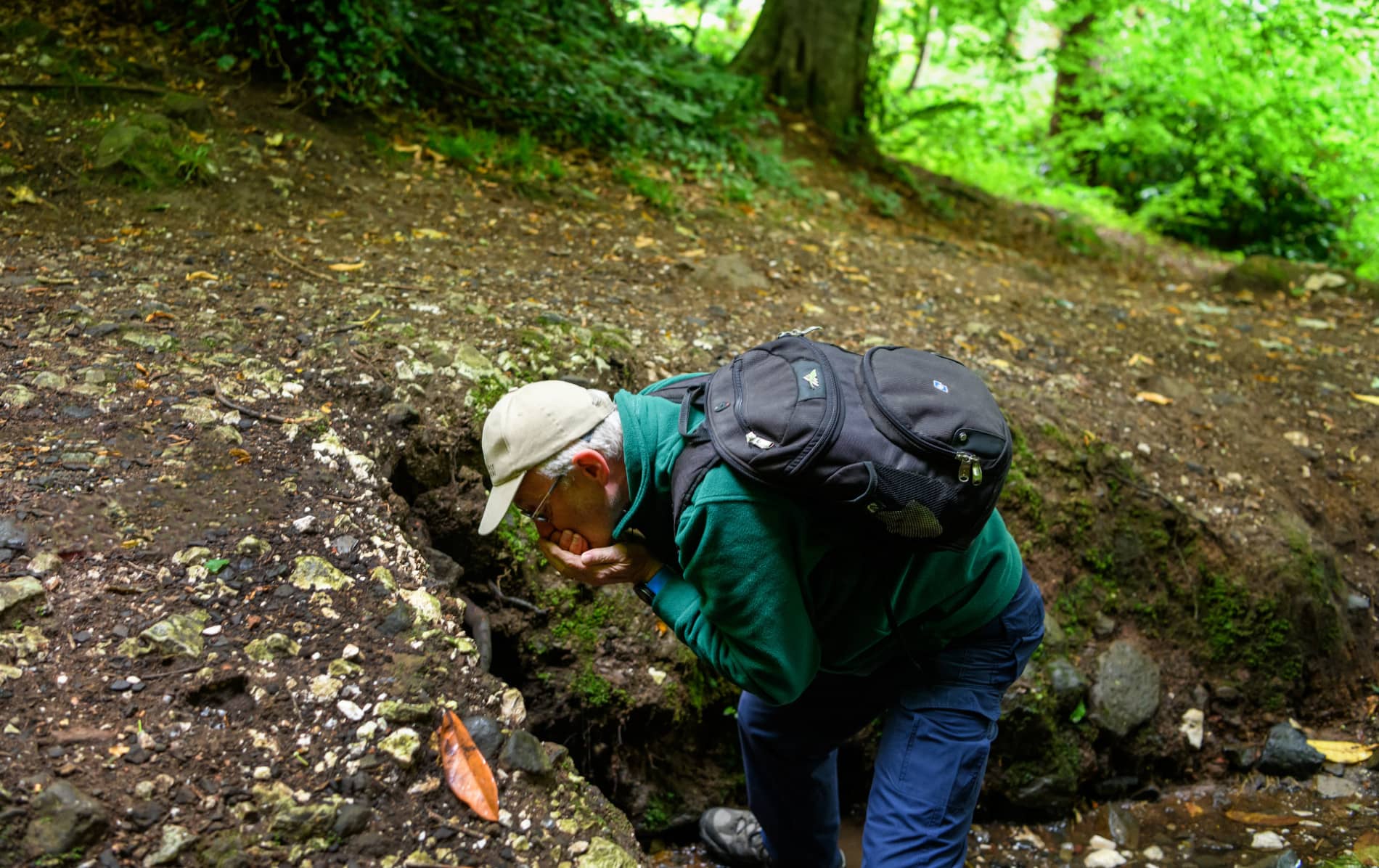
Walking guide, Rodney Ferguson, drinks from a spring
Wild garlic, sorrel and herbs are plentiful in the summer, Rodney explains as we head onward under the trees. We stop close to an earthy mound as he points out what he describes as a “volunteer’s well”. It was named after the Irish Volunteers of the late 18th century – a militia set up in response to the threat of a French or American invasion at the time.
“The water that’s springing up here is very pure,” says Rodney as he steps into the spring to take a sip. I learn that it takes an astonishing 1,000 years from when it falls as rain to get to the well through the limestone and the basalt. “Wells like this would have allowed anyone hiding out in these hills to survive,” Rodney tells me. This one was also used as a pit-stop by visitors who visited Cave Hill on their Easter break in the 19th century.

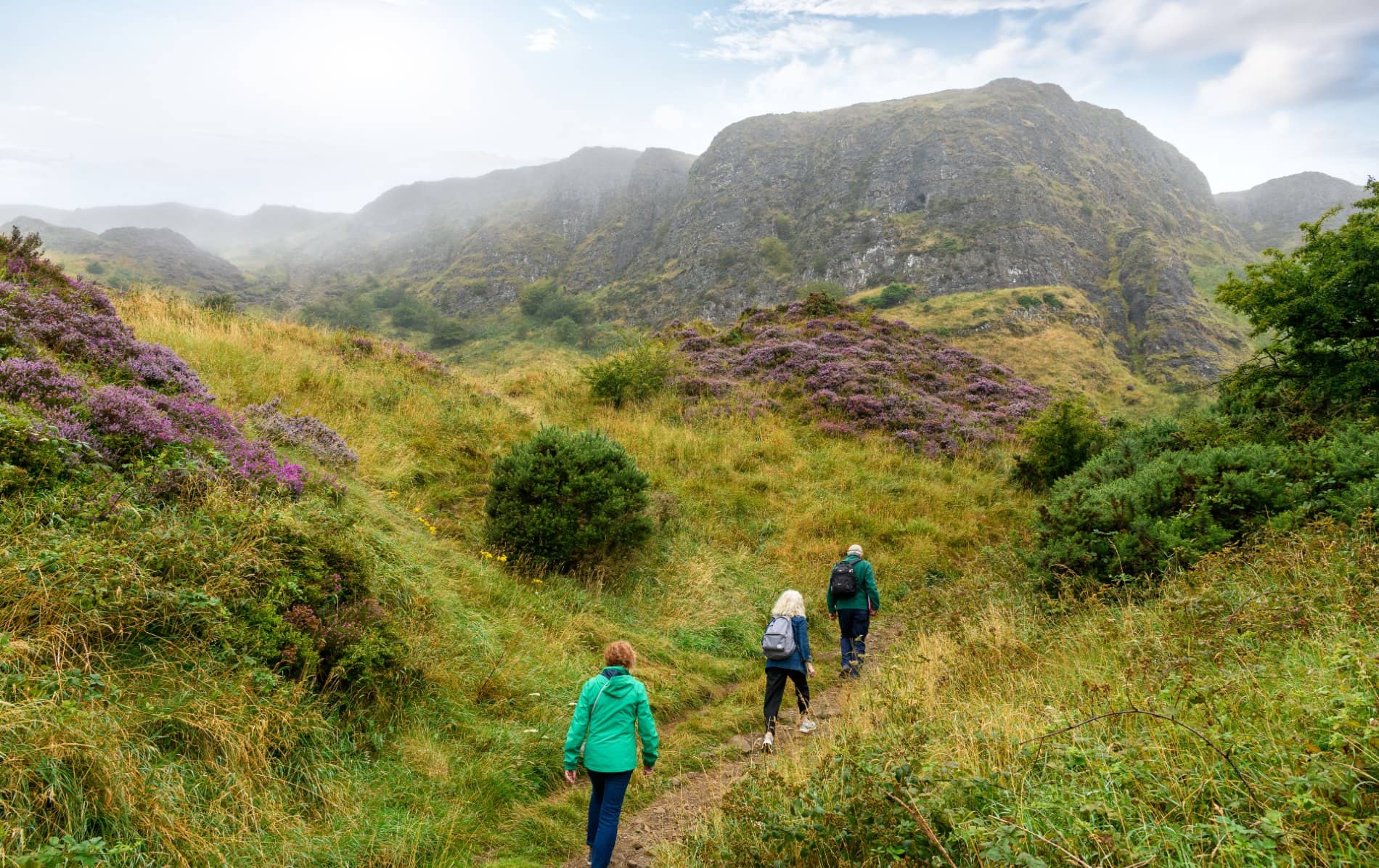
Landscapes of Cave Hill
On we go, hiking steeply up rough paths through the remainder of the forest. As we emerge out into open space, the sight of the famous caves come into view – large man-made craters that puncture the sheer cliff face. The caves were said to have been used in olden times as prison cells and hiding places and for storage. Today, it’s advised to stay away as the rock around here can be unstable.

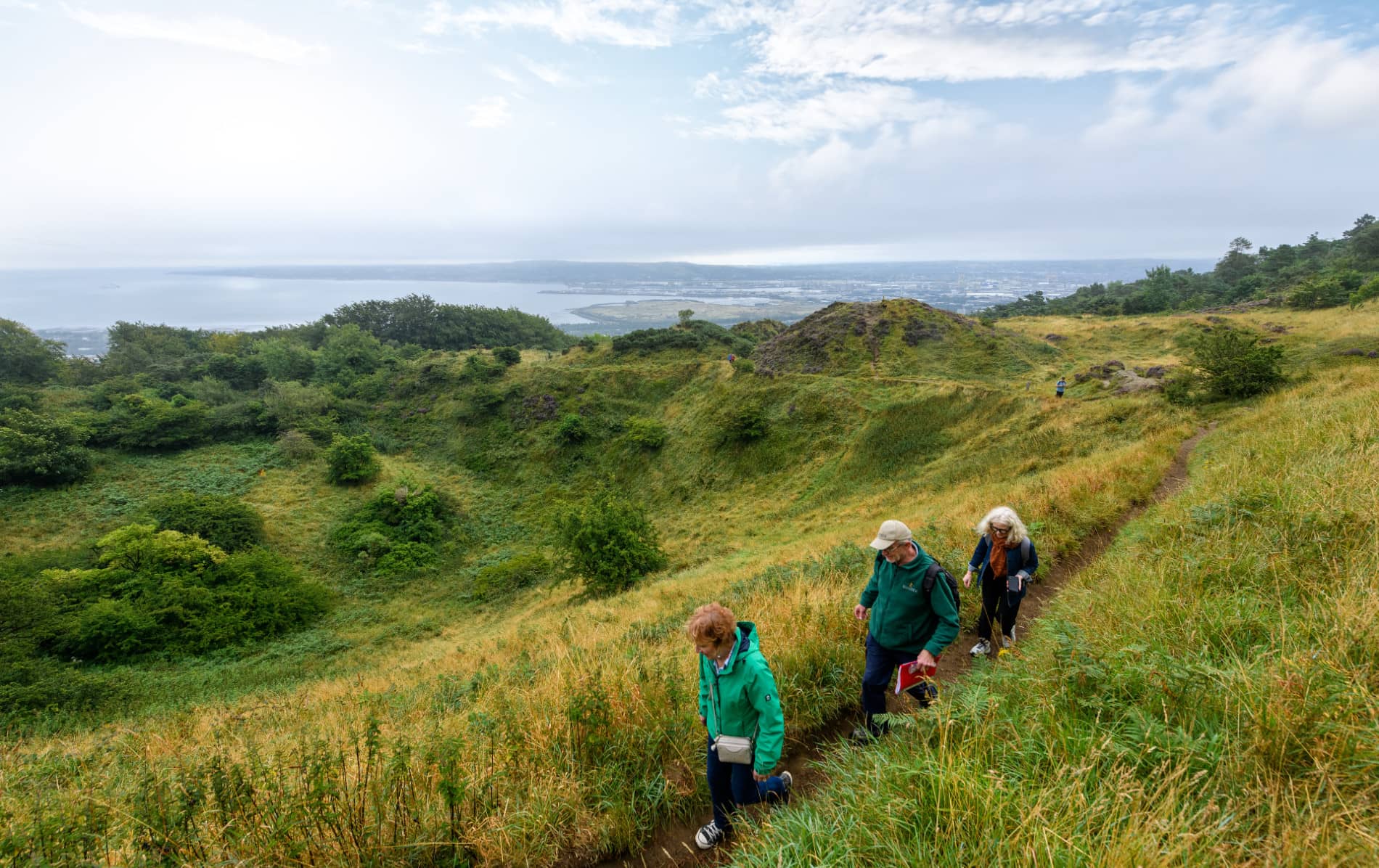
Sights of Belfast and Northern Ireland on Cave Hill walking tour
More interestingly is the large semi-circle underneath the lowest cave, known as the “Devil’s Punchbowl”. “There was probably some mining activity here at one time,” Rodney says. “We don’t really know, but it was used in the early days by farmers who were bringing their cattle to market. They would have kept them down here for a couple of days to feed them up.”
Doesn’t explain the name though… Rodney smiles wryly. “It got its name from being somewhere people came to party. There were some notorious people back in the day who made poitín, which was called the ‘devil’s buttermilk’. This is where parties would have been held at Easter and in summer.”

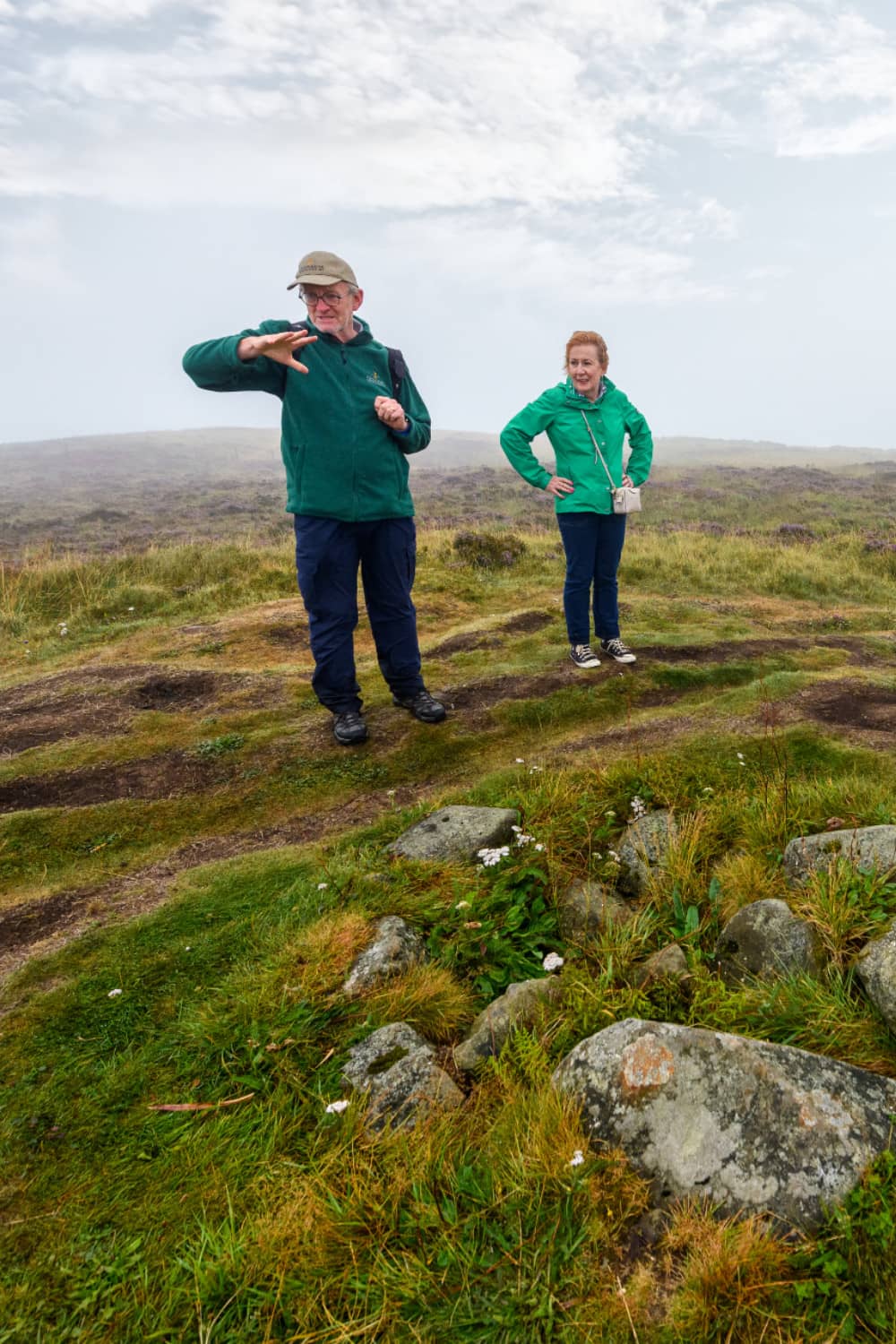
Walking guide, Rodney Ferguson

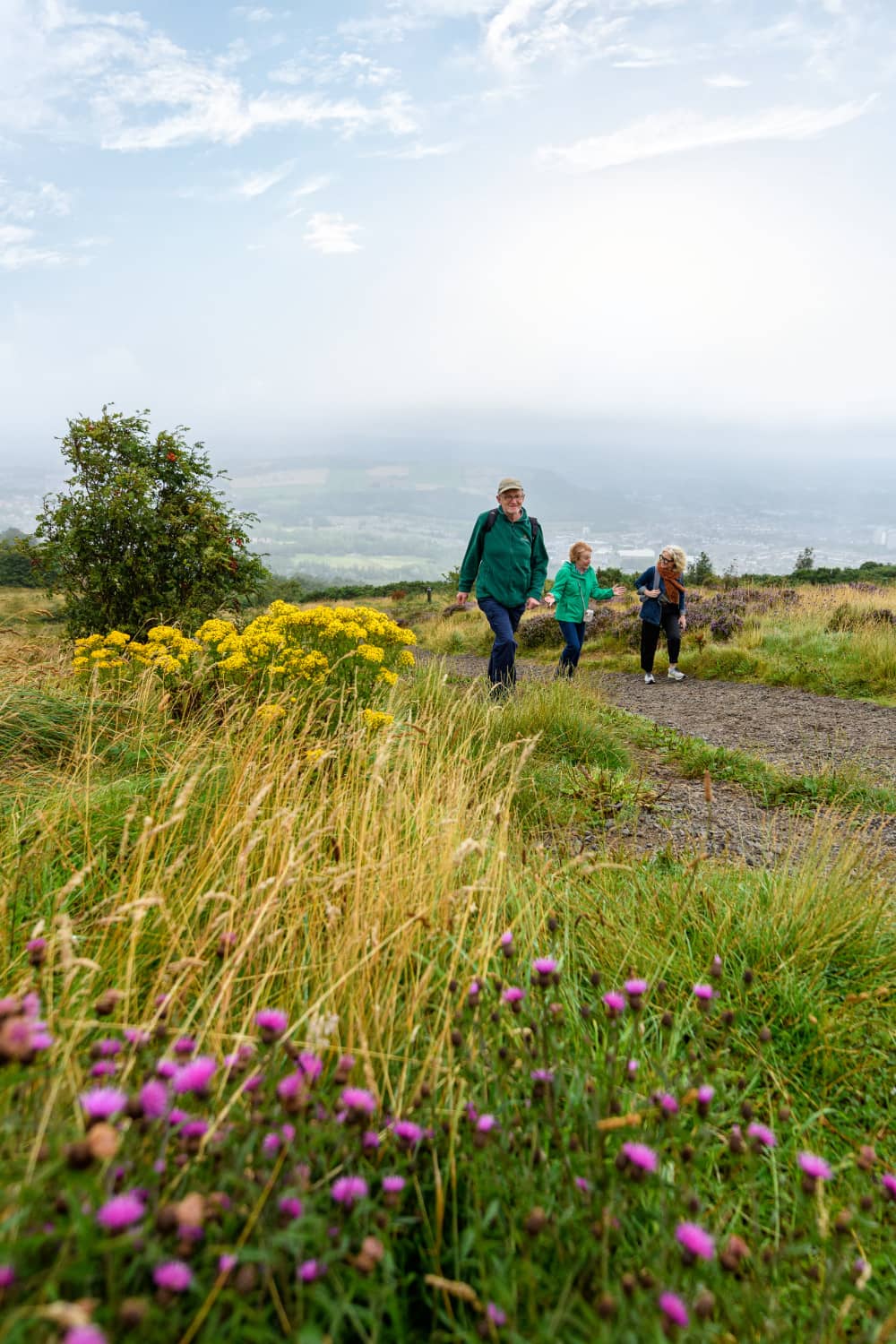
Cave Hill walking tour
As we head on up towards the summit of Cave Hill, Rodney points out ravens’ nests, swifts and swallows. “When you get to the top of the hill here, you might get a blast of wind coming from the other side,” he warns, and he’s not wrong. We’re out onto open pasture – a completely different landscape from what we’ve been walking in. The wind whips around as we look at a small cairn site, which possibly dates back to Neolithic times and Rodney explains about the continuing interest in excavations in this incredibly rich historical area.

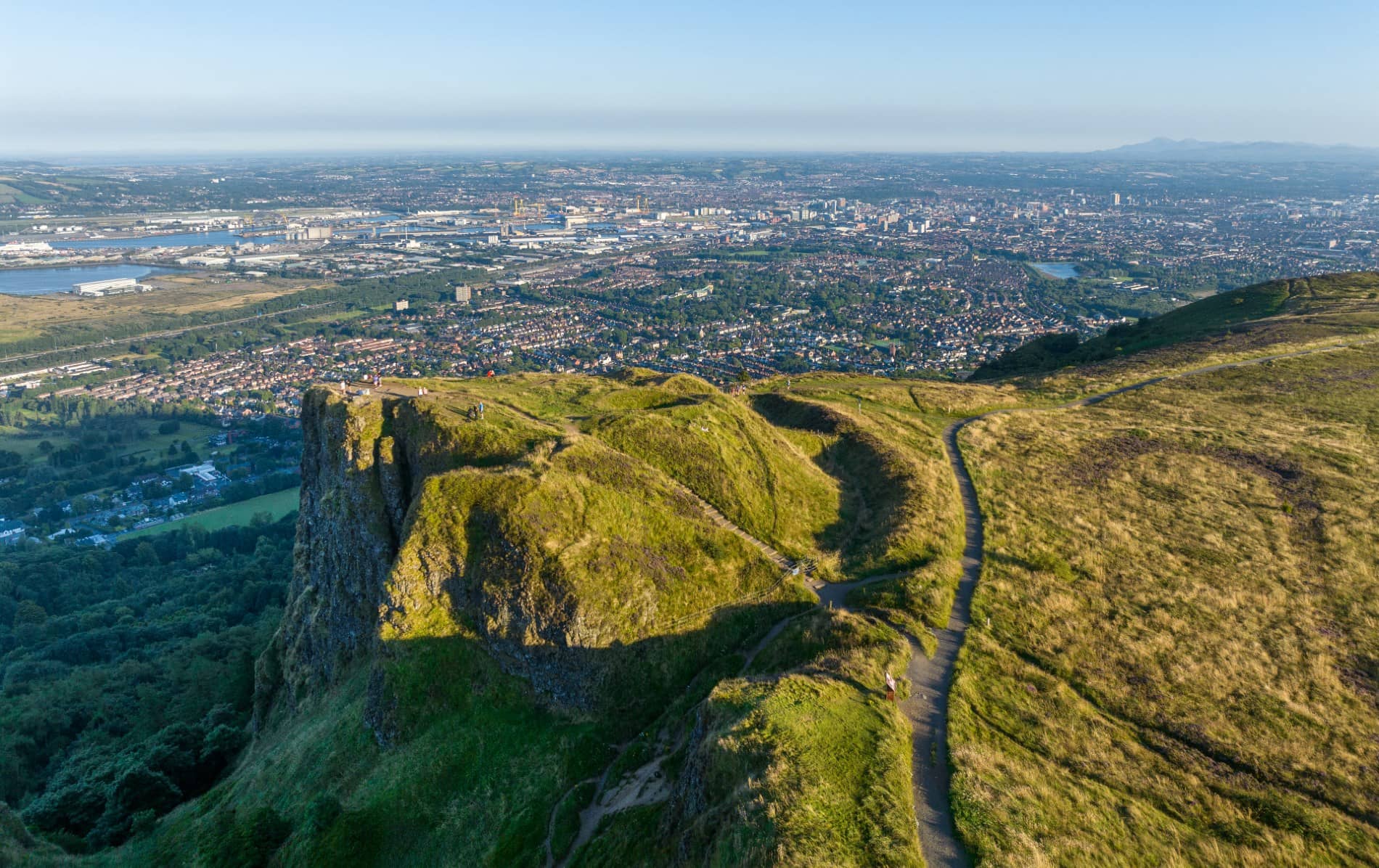
Cave Hill, Belfast
As we walk to Napoleon’s Nose, it feels like we are a million miles away from Belfast city centre we’re looking out over. Under racing skies and in a wind that sweeps in soft mist one minute and blue skies the next, we look out onto sea, mountain and Belfast’s neighbourhoods.
We’ve a descent to do yet, which will take about 40 minutes, but for right now, at right this moment… it's a perfect place to be.











